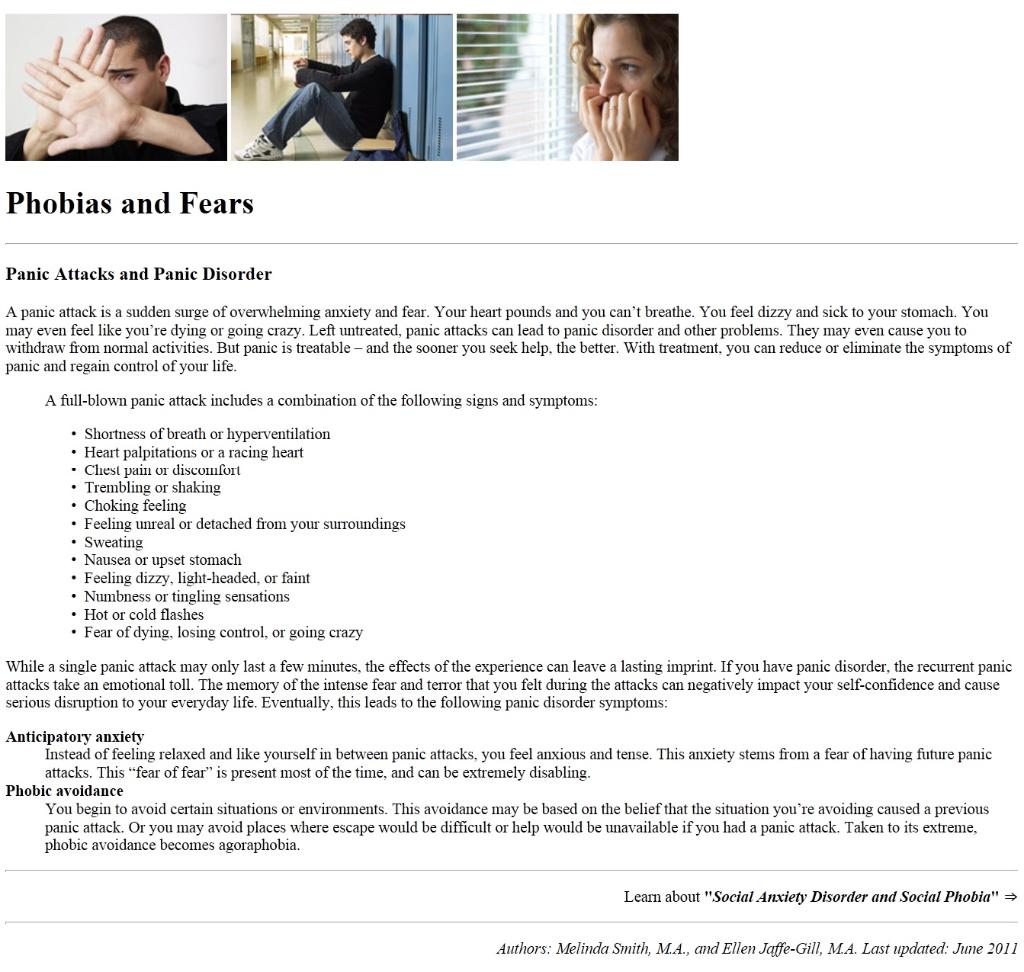Question
i need you to make a html code for A psychiatrist wants you to create web pages for his website. All the pages are for
i need you to make a html code for
A psychiatrist wants you to create web pages for his website. All the pages are for spreading phobia and fear treatment education. He wants you to create different page for different kind of phobia.
Using the aforementioned data files, you must modify the html file so that, when viewed in a web
browser, it will render exactly as follows:

To do this, you should complete the following steps:
-
Open the phobia.htm file from the assignment1/problem 1 folder included with your data files.
-
Add opening and closing tags to the files. Insert a
section and enclose the complete text on Phobia within a element.Page 2 of 5
-
Add the page title as "Phobias" inside head section
-
Directly below the opening
tag, insert image1.jpg, image2.jpg and image3.jpglocated in assignment1/problem1 folder. Specify the alternate text of image as "image1", "image2", "image3" respectively. Align all the images in continuous manner inside a paragraph tags.
-
Mark the next text line containing "Phobias and Fears" as h1 heading
-
Insert horizontal rules directly below text line "Phobias and Fears".
-
Insert the text "Panic Attacks and Panic Disorder" as h3 heading
-
Insert the first paragraph
-
Insert the text below first paragraph in web page using blockquote and unordered list elements.
-
Insert the second paragraph.
-
Define the "Anticipatory anxiety" and "Phobic avoidance" as bold and enlist them using
definition list by making them as definition term.
-
Insert text associated with this term as definition description of definition list.
-
Insert horizontal rules directly below
-
closing tags of definition list
-
Insert second to the last line as right align paragraph style.
-
Define text "Social Anxiety Disorder and Social Phobia" as bold and Italic style.
-
Look for the right arrow html number in the link provided
http://www.ascii.cl/htmlcodes.htm and insert it with text.
-
Mark the last line as cite tags with right align text style content of div tag.
-
Save your changes to the file, and then verify that the page appears correctly in Internet
Explorer, Chrome, and Firefox (Web browsers)*.
-
the text ( Phobias and Fears Panic Attacks and Panic Disorder A panic attack is a sudden surge of overwhelming anxiety and fear. Your heart pounds and you cant breathe. You feel dizzy and sick to your stomach. You may even feel like youre dying or going crazy. Left untreated, panic attacks can lead to panic disorder and other problems. They may even cause you to withdraw from normal activities. But panic is treatable and the sooner you seek help, the better. With treatment, you can reduce or eliminate the symptoms of panic and regain control of your life. A full-blown panic attack includes a combination of the following signs and symptoms: Shortness of breath or hyperventilation Heart palpitations or a racing heart Chest pain or discomfort Trembling or shaking Choking feeling Feeling unreal or detached from your surroundings Sweating Nausea or upset stomach Feeling dizzy, light-headed, or faint Numbness or tingling sensations Hot or cold flashes Fear of dying, losing control, or going crazy While a single panic attack may only last a few minutes, the effects of the experience can leave a lasting imprint. If you have panic disorder, the recurrent panic attacks take an emotional toll. The memory of the intense fear and terror that you felt during the attacks can negatively impact your self-confidence and cause serious disruption to your everyday life. Eventually, this leads to the following panic disorder symptoms: Anticipatory anxiety Instead of feeling relaxed and like yourself in between panic attacks, you feel anxious and tense. This anxiety stems from a fear of having future panic attacks. This fear of fear is present most of the time, and can be extremely disabling. Phobic avoidance You begin to avoid certain situations or environments. This avoidance may be based on the belief that the situation youre avoiding caused a previous panic attack. Or you may avoid places where escape would be difficult or help would be unavailable if you had a panic attack. Taken to its extreme, phobic avoidance becomes agoraphobia. Learn about "Social Anxiety Disorder and Social Phobia" ? Authors: Melinda Smith, M.A., and Ellen Jaffe-Gill, M.A. Last updated: June 2011)
-
image1

-
image2

-
image3

Step by Step Solution
There are 3 Steps involved in it
Step: 1

Get Instant Access to Expert-Tailored Solutions
See step-by-step solutions with expert insights and AI powered tools for academic success
Step: 2

Step: 3

Ace Your Homework with AI
Get the answers you need in no time with our AI-driven, step-by-step assistance
Get Started


